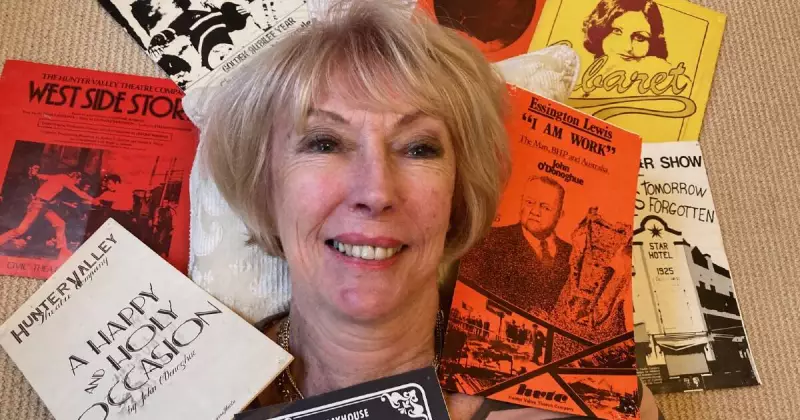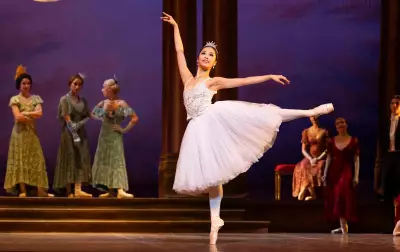
The Hunter Valley Theatre Company may have closed its doors decades ago, but its legacy continues to shine brightly in Australia's cultural memory. This pioneering institution represented what many describe as a golden age for creative talent in the Hunter region, operating from 1976 to 1996 and leaving an indelible mark on Australian theatre.
The Birth of Australia's First Professional Regional Theatre
According to historical research by former Newcastle Herald theatre critic Ken Longworth, the HVTC holds the distinguished title of being Australia's first fully-funded professional regional theatre company. This bold venture not only entertained audiences but brought forgotten Newcastle stories to life, often revealing surprising local history to wider audiences.
The company served as a launching pad for numerous performers who would later achieve national and international fame. Among the talents who graced its stages were Miranda Otto, David Wenham, John Doyle (better known as 'Rampaging' Roy Slaven), Vic Rooney, Susie Porter, Grant Dodwell, Celia Ireland and a particularly impressive local youngster, the versatile Jonathan Biggins, who later gained fame through the Wharf Review and his portrayal of former Prime Minister Paul Keating.
The Civic Playhouse: Home and Challenges
The HVTC is most commonly associated with its principal home, the Civic Playhouse, which was designed by Newcastle architect Brian Suters and opened in 1979. Located within the former Civic Wintergarden building adjoining the historic Civic Theatre, the Playhouse offered an intimate theatrical experience with approximately 200 raised seats positioned remarkably close to the performers.
Despite initially attracting strong audiences, the company faced persistent financial challenges. As Lyn Thurnham, who served on the HVTC board for over a decade and as deputy chair from 1997 to 2001, noted, even filling all 191 seats wouldn't cover production costs. The company went into recess several times before eventually folding in 1996, with the Playhouse closing two years later in 1998.
Following a spirited community campaign and $1.5 million in funding from the NSW Ministry for the Arts, the Playhouse triumphantly reopened in December 2004 after eight months of construction work.
Memories from the Front Lines
Helen Duncan, a key figure in the company's early years, recalls the ambitious scope of their operations. 'I was there for three years. We were staging eight plays a year, not counting the special Christmas show,' she remembers. Duncan began as a volunteer with director Terry Clarke before joining the HVTC board for approximately 15 months.
Duncan's role involved liaising with government departments, crucial work since government funding was essential to the company's survival. She recalls that six regional theatre companies, including troupes in New England and Wollongong, briefly benefited from NSW Ministry of the Arts funding in 1976, following an initiative proposed during the federal Whitlam Government.
'While we were operating, we had the most amazing community support and took shows on the road up the Hunter. I even drove the bus!' Duncan recalls. 'In those very early years at the Civic Playhouse it was tough going. There was almost no stage and no back space. Actors would enter from dressing rooms. It was very difficult, but we managed.'
The company's resilience was demonstrated by their ambitious production of the musical Cabaret in March 1979, staged despite the venue's significant spatial limitations. They also maintained the tradition of presenting one major production each year at the larger Civic Theatre itself.
Financial pressures eventually led to the entire company being sacked due to lack of funds at the end of 1982 - one of four such occurrences throughout the HVTC's existence. Undeterred, Duncan along with Allan McFadden and Vicki Newman formed C.P. Productions to keep local theatre alive, staging productions like the comedy Dimboola and The Three Musketeers at alternative venues.
Local Stories Take Centre Stage
One of the company's most significant achievements was the world premiere season of Essington Lewis: I Am Work on September 5, 1981. This unlikely hit play about the growth of BHP's Newcastle Steelworks was written by local playwright John O'Donoghue and directed by Aarne Neeme.
Starring Novocastrian actor Vic Rooney, the production defied critics who initially dismissed it as 'too Newcastle' and went on to be staged in all Australian states over 16 years. O'Donoghue penned several other plays for the company, including In The Field Where They Buried Peter Pan and Sao, about Hunter biscuit baron Mr Arnott.
Another early success was The Star Show in October 1980, which retold the story of the Star Hotel riot from the previous year. This was the first play commissioned by the HVTC, reflecting the company's strong commitment to local talent and history.
Reflecting on the demanding schedule actors maintained, Duncan notes, 'It was a very interesting time. I remember the actors performing six nights a week, but during the days they were rehearsing the next play and being someone else all the while. It must have been difficult for them.'
After her involvement with HVTC ended, Duncan continued promoting Newcastle's cultural scene, including organizing the Newcastle Harbour Regatta and an ambitious overseas promotion in England to mark Australia's 1988 Bicentenary.
The company's records, once thought lost, were rediscovered and rescued in 2008 and are now preserved by the University of Newcastle, ensuring that the story of this groundbreaking theatrical institution remains accessible for future generations.
As Helen Duncan recalls, director Aarne Neeme kept a saying from famed English director Sir Tyrone Guthrie on the wall: 'Artistic excellence and, in fact, administrative excellence, can only be gained by sticking your neck out as far as it can go.' For twenty remarkable years, that's precisely what the Hunter Valley Theatre Company did.





